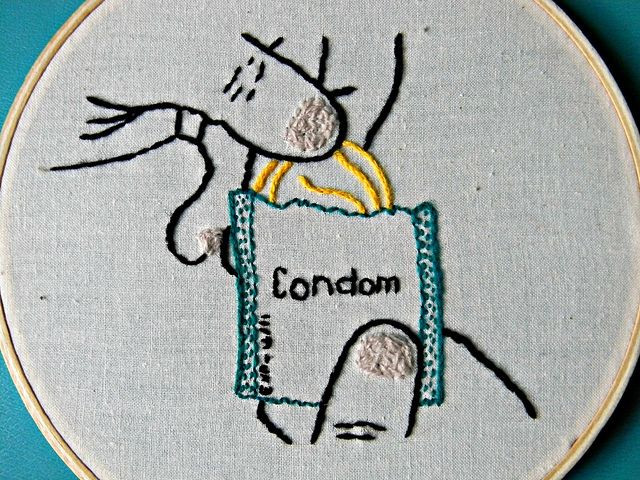Hydrogel Condom Releases Anti-HIV Antioxidants, Boosts Sexual Pleasure

Hydrogel condoms may soon become the “rubber of the future” capable of combating HIV, while also being easier and more pleasurable to use.
In 2014, there were about 36.9 million people living with HIV and about two million newly diagnosed, according to the World Health Organization (WHO). HIV, which leads to AIDS when untreated, is primarily spread through unprotected sex. And while antiretroviral therapy (ART) has helped to turn the once fatal condition into a chronic one, 1.2 million people still died from AIDS-related diseases last year.
It’s well known by now that condoms aren’t popular. Only about 5 percent of men worldwide use them, even though they’re 98 percent effective at preventing unwanted pregnancy and transmission of HIV, among other STDs. Dr. Mahua Choudhury, assistant professor at the Texas A&M Health Science Center Irma Lerma Rangel College of Pharmacy, believes a shift to a non-latex condom would be more appealing to use while still protecting from the aforementioned STDs.
“Some people are allergic to latex, and others are just not comfortable with it. Therefore, we wanted to create a novel material,” she said about the hydrogel condom in a press release.
Choudhury is one of 54 applicants to be selected out of 1,700 to receive the Grand Challenge in Global Health Award from the Bill & Melinda Gates Foundation, which funds individuals worldwide in hopes of solving global health challenges. The interest in this round is a low-cost, latex-free condom.
While most condoms are made of latex, the hydrogel condom is made of water held together by strong molecular chains called polymers. Hydrogels have already been used for a number of applications, including contact lenses, toothpaste, and shower gels.
Similar to a latex condom, the hydrogel will help prevent STDs and unplanned pregnancy. However, with the help of a plant-based antioxidant called quercetin, it possess anti-HIV properties that can help fight the disease. Choudhury believes that as the condom of the future, it could revolutionize the fight against HIV. “If there is an accident or something happens,” Choudhury says, “this antioxidant will be released and prevent the replication of HIV.”
Even better, quercetin acts as a stimulant to enhance pleasure during sex by promoting smooth muscle relaxation, increasing arterial blood flow, and maintaining nitric acid levels. This allows the man to maintain his erection, thus enhancing the overall sexual experience.
While Choudhury and her team have already created the hydrogel and embedded the antioxidant, they still have to figure out how fast the enmeshed antioxidant will be released from the condom. “We don’t know if it will automatically release, or if you have to apply pressure,” she said.
This is something the research team plans to observe during testing over the next several months. So don’t throw away the latex condoms just yet guys; it could take years for this condom to hit shelves. After all, it would have to meet a set of standards set by the Food and Drug Administration (FDA), as well as go through trials testing for slippage, breakage, and leakage, among other weaknesses. Until then, there are several effective alternatives to the latex condom that can keep you protected from STDs and unplanned pregnancy here.



























